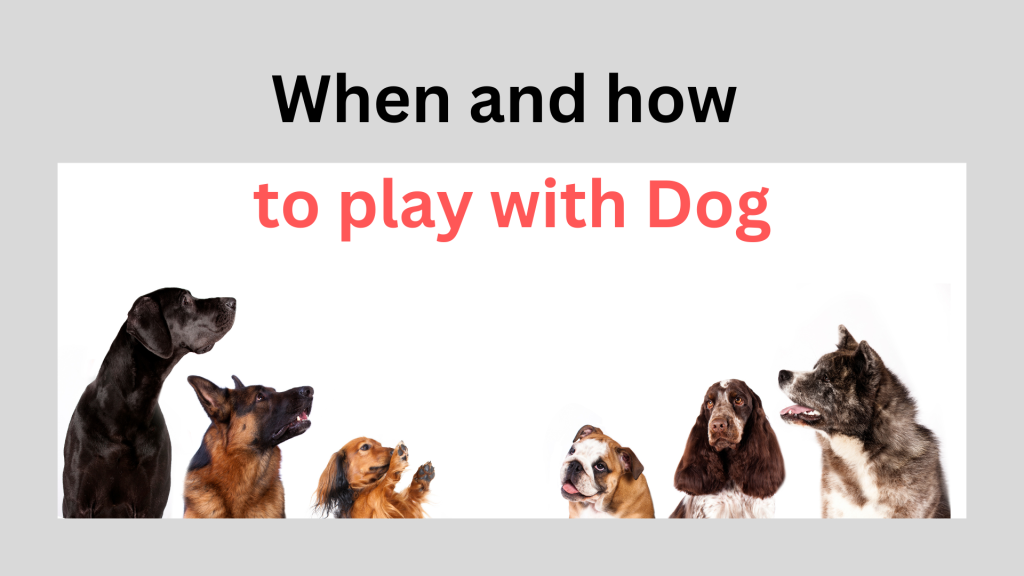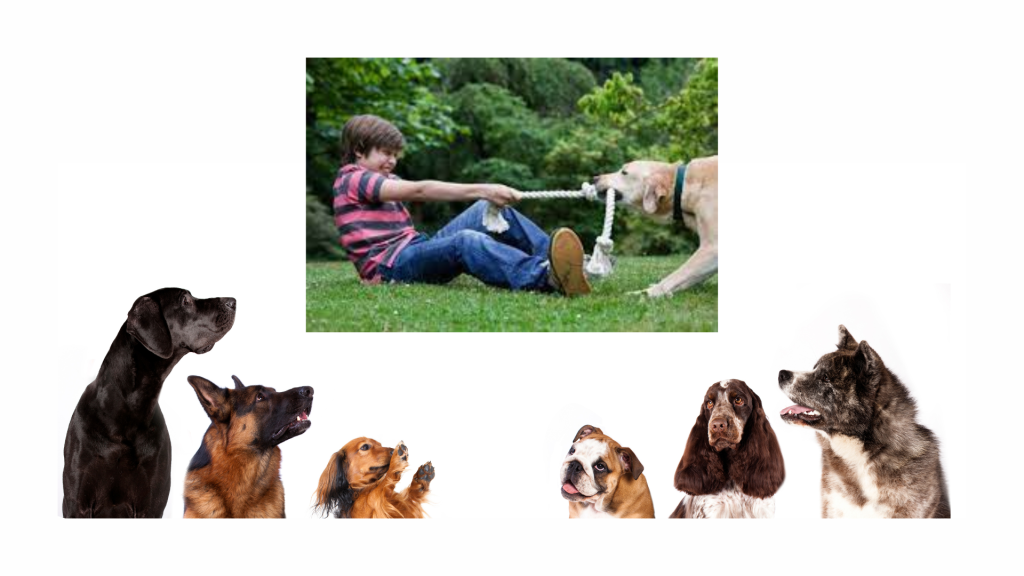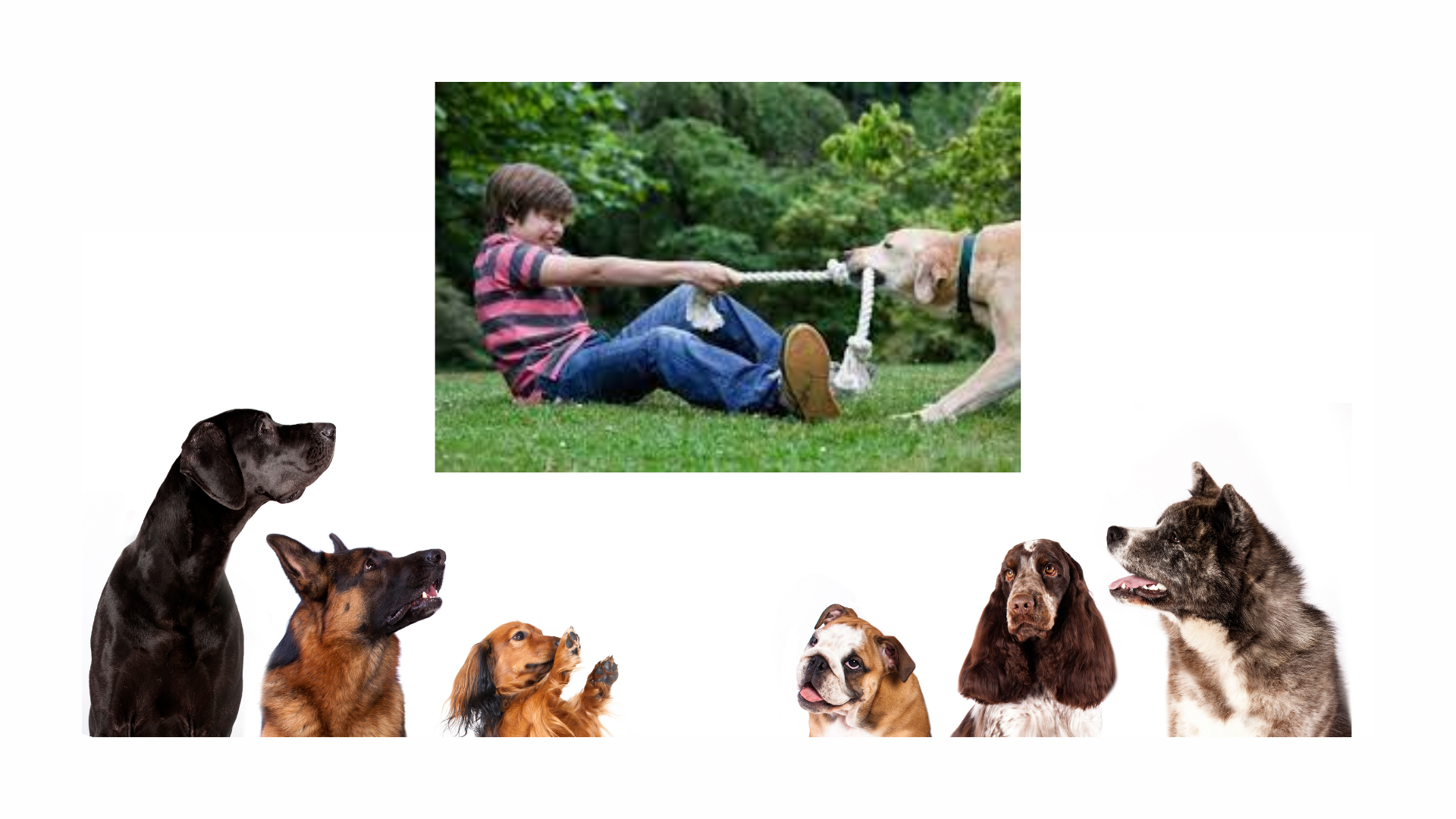Dogs love to play and engage in activities that are fun and stimulating for them. The amount and type of play that a dog enjoys can vary based on their breed, age, and individual personality.
Generally, dogs like to play when they have excess energy, are feeling bored or restless, or are seeking social interaction with their human or canine companions. Puppies, for example, have a lot of energy and typically enjoy playing throughout the day. Adult dogs may be more interested in playing during specific times of the day, such as early morning or evening, when they are feeling more alert.
Some of the ways that dogs like to play include fetching, tug-of-war, chasing, and playing with interactive toys. It’s important to provide your dog with plenty of opportunities to play and engage in activities that they enjoy, as it can help to promote their physical and mental wellbeing.

Playing with your dog is not only a fun and rewarding experience but also an important part of maintaining their physical and mental health. By engaging in regular playtime with your furry friend, you can strengthen your bond, provide them with much-needed exercise, and keep their minds stimulated. In this article, we’ll explore when and how to play with your dog to ensure that both you and your pup get the most out of your playtime together.
When to Play with Your Dog Dogs are creatures of routine, and they tend to thrive on consistency. Therefore, it’s essential to establish a regular playtime schedule that works for both you and your furry friend. Ideally, you should aim to spend at least 30 minutes a day engaging in interactive play with your dog. This can be broken up into several shorter sessions throughout the day, depending on your schedule.
The timing of your play sessions can depend on your dog’s individual preferences and energy levels. Many dogs have bursts of energy in the early morning and late afternoon or early evening, making these ideal times for playtime. However, it’s essential to pay attention to your dog’s signals and adjust your play schedule accordingly. If your pup seems tired or uninterested in play, it may be time for a break.

How to Play with Your Dog There are several ways to play with your dog, and the best activities will depend on your dog’s age, breed, and personality. Here are some of the most popular and effective ways to play with your furry friend:
- Fetch: Playing fetch is an excellent way to give your dog the exercise they need while also bonding with them. Start by throwing a toy or ball, and encourage your dog to bring it back to you. Repeat this several times, rewarding your dog with treats or praise each time they successfully retrieve the toy.
- Tug-of-war: Dogs love to play tug-of-war, and it’s a great way to build their strength and confidence. Start by choosing a sturdy toy and gently tugging it back and forth with your dog. Remember to let your dog “win” occasionally to keep the game fun and engaging.
- Hide and Seek: Dogs love to use their sense of smell, making hide and seek an exciting game for them. Start by hiding a toy or treat in a designated area and encouraging your dog to find it. Gradually increase the difficulty level as your dog becomes more skilled at the game.
- Puzzle Toys: Puzzle toys are a great way to keep your dog’s mind stimulated and engaged. These toys are designed to challenge your dog’s problem-solving skills, and they can be a fun way to give your pup some mental exercise.
- Playdates: Dogs are social creatures, and they love to interact with other dogs. Organizing playdates with other dogs can be an excellent way to provide your pup with socialization and exercise.
Final Thoughts Playing with your dog is an essential part of maintaining their health and happiness. By establishing a regular playtime routine and incorporating a variety of fun and engaging activities, you can strengthen your bond with your furry friend while also keeping them physically and mentally stimulated. Remember to pay attention to your dog’s signals and adjust your play schedule accordingly to ensure that both you and your pup get the most out of your playtime together.

